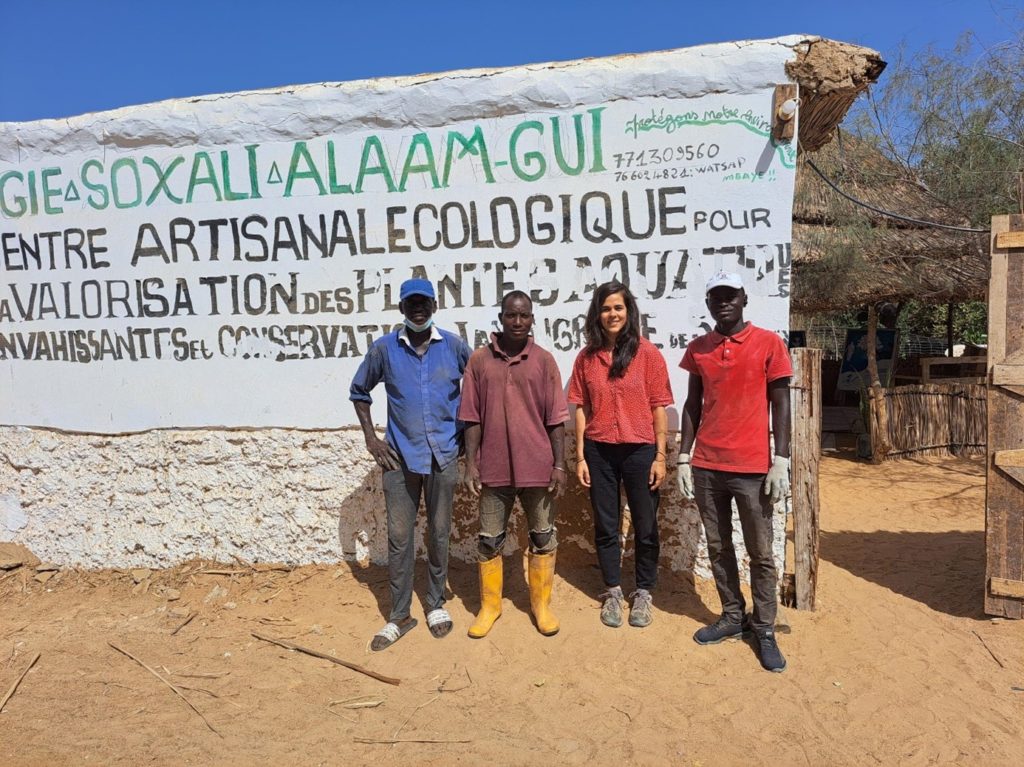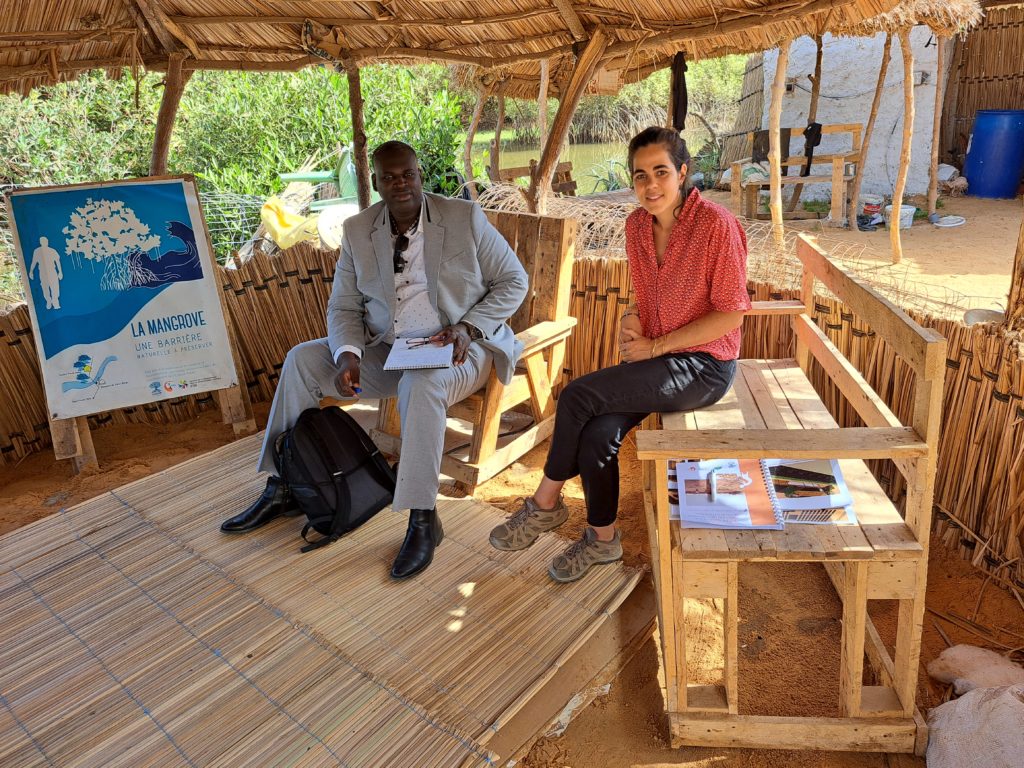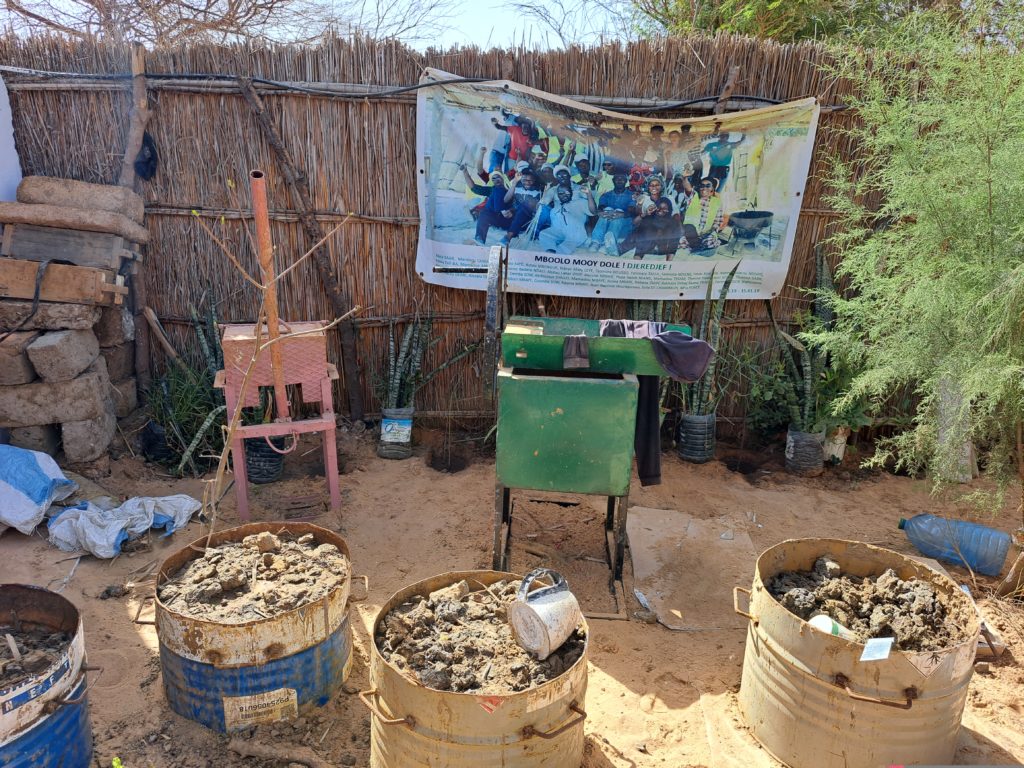Located at the heart of the mangrove zone of Bango, in the Saint-Louis region in Senegal, the “Ker Alaam Gi” project – or House for the environment – aims to build, with the help of biobased materials, an integrated resources centre dedicated to the environment and mangrove protection for the economic development of local communities.
In 2021, the NGO SEED (Solidarity, Equity, Empowerment, Development) applied to the call for projects organised by the setec Foundation on sustainable construction in France and 6 African countries. After a rigorous selection process, the jury decided to award the winning prize to Ker Alaam Gi for a total financial support of 35,000 euros.
THE PROJECT
The “Ker Alaam Gi” Project

Nina Poret (project manager) and the SEED team ©Adrame NDIAYE
SEED is an association dedicated to local and international solidarity created in 2015. It aims to improve the living conditions of vulnerable populations in France and around the world (Senegal, Bolivia, Argentina, Mali). SEED works as an intermediary to support civil society organisations (inhabitants collectives, local structures etc.) with the goal of putting forward co-built projects.
The association has worked in Senegal since 2018 in collaboration with the local inhabitant federation involved in the reconstruction of precarious and degraded habitat in the Dakar suburbs due to more frequent floods. It aims at the implementation of a construction chain made from local and biobased materials (Typha, a.k.a. reedmace).
SEED had supported the Economic Interest Group (EIG) “Suxali Alaam” since 2018 in its activities related to the transformation and valorisation of typha plants and resources from the mangrove. The project “Ker Alaam Gi” is developed by the EIG and SEED and is the continuity of 2 previous projects: “Imagine Senegal” in 2019 about the construction of the transformation and valorisation centre of mangrove products; “Thatched women” in 2021 about the formation of women to the first local business line in sustainable construction.
The project’s objective is to support economic development and to favour poverty reduction through the valorisation of local ecological resources and environmental protection.
In that way, the project aims at:
- The creation of an integrated resources centre, dedicated to the environment, to benefit the EIG Suxali Alaam (30 members) by building a 100m2 facility in local biobased materials (typha and dirt) near the mangrove
- The development of 4 responsible and endogenous business lines, 2 in sustainable construction, equipping and training 8 savings groups in Bango (80 people)
- The involvement of local communities (500 inhabitants), indirect beneficiaries of the project, in the preservation of their living environment by animating sensibilisation campaigns in the House of the environment on ecological architecture, waste management, endemic natural spaces protection.
Stocking area for construction material ©Adrame NDIAYE
Sustainable construction
SEED’s actions are organised around 2 principal axes: the support to eco construction to improve living conditions and collective spaces for formation, and consultation and sensibilisation to strengthen the competences and abilities of local communities. Sustainable construction is therefore at the heart of their mission.
As part of the project “Ker Alaam Gi”, supported by the setec Foundation, the construction is done using biobased materials, especially a type of reedmace known as typha.
The “typha australis” is a reedmace growing abundantly by the river Senegal and the Guiers lake. As a result of poorly maintained hydro-agricultural developments built in the 1970s, typha proliferates to the point of destabilising the natural balance of water bodies. Nowadays, it has expanded so much that it is a danger to the ecosystem and water quality.
However, the plant has undeniable qualities for its use in numerous sectors, especially construction. It is possible to valorise this reedmace in buildings thanks to its hydrophobic characteristics. It can be used for wall and roof insulation, phonic absorption etc. The construction of the House of the environment is supervised by an architect specialised in the design and realisation of bio-based buildings.
Preparation of typha-dirt bricks ©SEED
How much has the project progressed?
Since the beginning of the year, several business lines have being structured, including the ones on biobased materials and apiculture. All of the necessary equipment has now been bought to implement these lines.
In the mean time, SEED has organised an apiculture formation for 15 people.
In addition, the planned field-school has been organized and held, enabling the association and its beneficiaries to create 4600 typha-dirt bricks that will be used for the construction of the House of the Environment.
The construction has started in september, after the wet season. Now, it needs to be finalized in order to further equip the building fully to host all of its planned activites.
Materials for brick preparation ©Adrame NDIAYE
The role of the setec Foundation
The setec Foundation financially supports SEED in the implementation of this project for a total of 35,000 euros.
A rigorous follow-up is organised the year following the awarding ceremony, and during which reports on the progress of the project are exchanged to ensure the smooth running of all missions and to discuss eventual needs.
In June 2022, Adrame NDIAYE, main engineer and head of sustainable development of setec Afrique, a subsidiary of the setec group, visited the project site as the Foundation’s representant. He was warmly welcomed by the local team from SEED and the EIG Suxali Alaam who showed the plot and the typha transformation site during half a day. Following the visit, he provided the Foundation with a report and the pictures seen in this article. Adrame was involved in the pre-selection process of projects during the call for projects in 2021. He was familiar with the Ker Alaam Gi Project and it was an opportunity for him to concretise his implication by going on site.

Adrame and Nina discussing the progress of the project ©Adrame NDIAYE
Know more about SEED on their website.
Follow the setec Foundation on LinkedIn.
Discover the projects supported by the Foundation.



